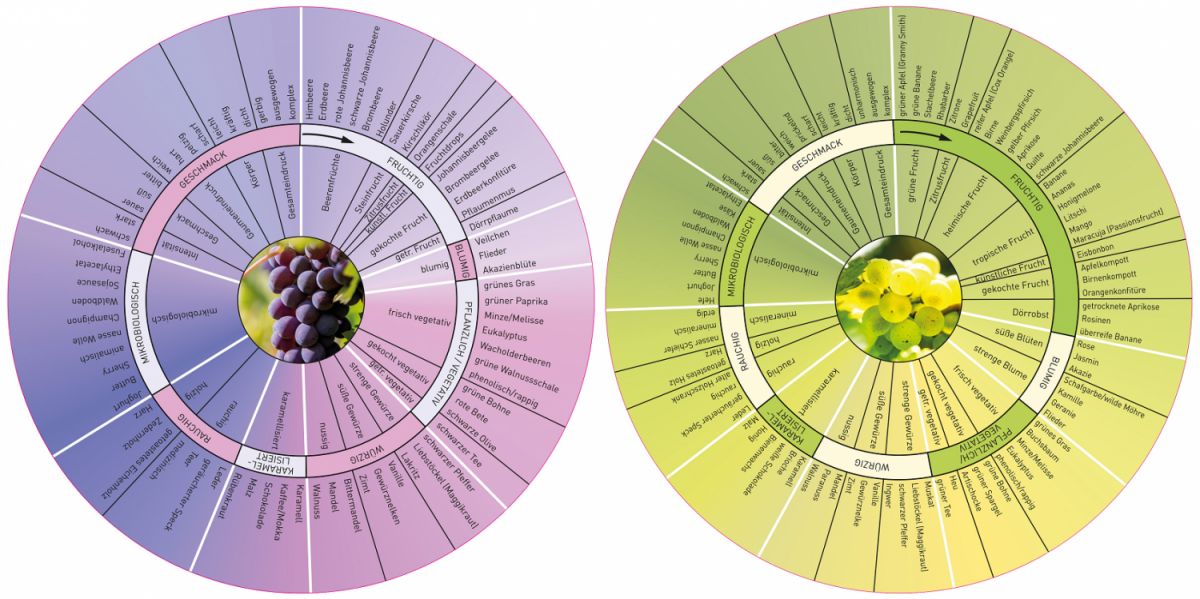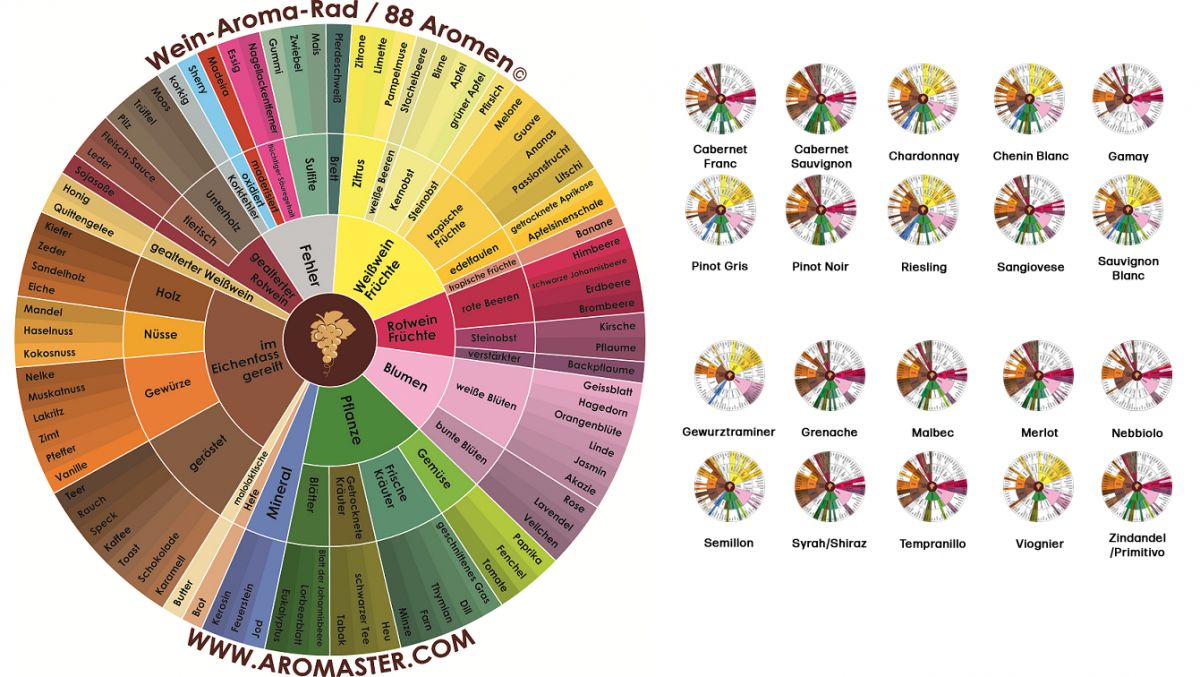In the mid-1980s, Professor Ann C. Noble (*1935) at the University of California in Davis (USA) developed a so-called "Aroma Wheel". In connection with a sensory research project, the scientist had discovered that there was no uniform terminology for describing wines. The aim was to use the Aroma Wheel to create a terminology that is as generally understandable and usable as possible, with which the smell or aroma of a wine can be defined or described as unambiguously as possible in the context of a wine evaluation or wine description. The aroma wheel is equally suitable for professional tasters and laymen.
The palette does not contain any hedonistically evaluative or imprecise terms such as extraordinary, elegant, full-bodied, clean or similar, but exclusively olfactory descriptions that are generally known and understood in the same way in professional circles. The aroma wheel consists of three circles from the inside to the outside. The innermost circle contains 12 main groups, the middle circle 29 subgroups and the outer circle 94 individual aromas. You can taste your way from the centre to the outside in three steps. The 12 main groups with corresponding examples are:
- flowery (floral) - blossoms of acacia, apple, erica, geranium, jasmine
- chemical - petroleum (oil, paraffin, diesel), sulphur, rubber
- earthy - earth, potato, mushrooms, moulds
- fruity - various fruits such as apricot, blackcurrant (cassis)
- caramelised - butter, molasses
- microbiological - butyric acid, vinegar, yeast, lactic acid (sauerkraut)
- nutty - hazelnut, walnut
- oxidised - see under ageing tone
- spicy - alcohol, pepper, acids
- vegetal (vegetable) - artichokes, eucalyptus, vegetables, grass, green wood, hay
- woody (woody tone, toasty aroma) - oak, coffee, vanilla
- spicy - anise, clove, ginger, liquorice
A special aroma wheel was later also created for sparkling wine. The Californian aroma wheel has become established worldwide with country-specific adaptations. Analogously, a "mouthfeel wheel" was developed in Australia to systematise tactile and trigeminal impressions. Based on the Californian aroma wheel, the BDO (Association of German Oenologists) has developed simplified aroma wheels adapted to the conditions of German wines. There is one for white wine and one for red wine. These can be obtained from the DWI. The aroma wheels are divided into seven main groups (segments) for the smell and one for the taste impression.

The scent is first generally delimited (inner circle) and then more precisely outlined in a second step (outer circle). So, for example, in the first step, under fruity smell, you can say that the wine smells like a berry. Then, by smelling more intensively in the second step, you can determine whether it is more like elderberry or currant or both. A special aroma wheel with different off-flavours for identifying wine faults was developed by the German wine journalist Laurentius Kollmann. In addition to aroma wheels, an aroma set for learning smells can be helpful, which is offered for example for red wine and white wine by the company AROMASTER. This company also offers a booklet with an aroma wheel for sommeliers as well as aroma wheels for the typical aromas of 20 grape varieties.

Pictures above: ©: German Wine Institute and Association of German Oenologists e.V
Pictures below: © AROMASTER
Voices of our members

Using the encyclopaedia is not only time-saving, but also extremely convenient. What's more, the information is always up to date.
Markus J. Eser
Weinakademiker und Herausgeber „Der Weinkalender“